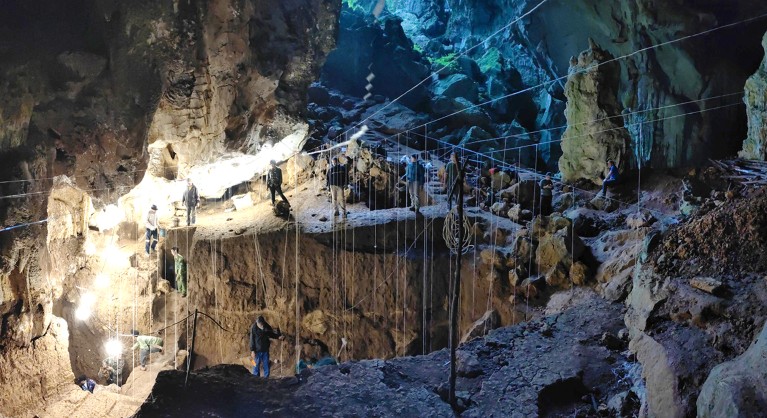
Researchers laboriously sifted through clay, bucket by bucket, using their fingers to hunt for bone fragments. Credit: Fabrice Demeter
Access options
Access Nature and 54 other Nature Portfolio journals
Get Nature+, our best-value online-access subscription
$29.99 / 30 days
cancel any time
Subscribe to this journal
Receive 51 print issues and online access
$199.00 per year
only $3.90 per issue
Rent or buy this article
Prices vary by article type
from$1.95
to$39.95
Prices may be subject to local taxes which are calculated during checkout
Nature 618, 658-659 (2023)
doi: https://doi.org/10.1038/d41586-023-01903-3
Updates & Corrections
-
Correction 14 June 2023: An earlier version of this story misstated how far down researchers excavated in the cave.
References
Freidline, S. E. et al. Nature Commun. https://www.nature.com/articles/s41467-023-38715-y (2023).
Demeter, F. et al. Proc. Natl Acad. Sci. USA 109, 14375–14380 (2012).
Shackelford, L. et al. Quat. Int. 466, 93–106 (2018).
Demeter, F. et al. PLoS ONE 10, e0121193 (2015).
Demeter, F. et al. Curr. Anthropol. 58, S527–S538 (2017).
Clarkson, C. et al. Nature 547, 306–310 (2017).

 Ancient tooth suggests Denisovans ventured far beyond Siberia
Ancient tooth suggests Denisovans ventured far beyond Siberia
 Record-breaking simulation hints at how climate shaped human migration
Record-breaking simulation hints at how climate shaped human migration






